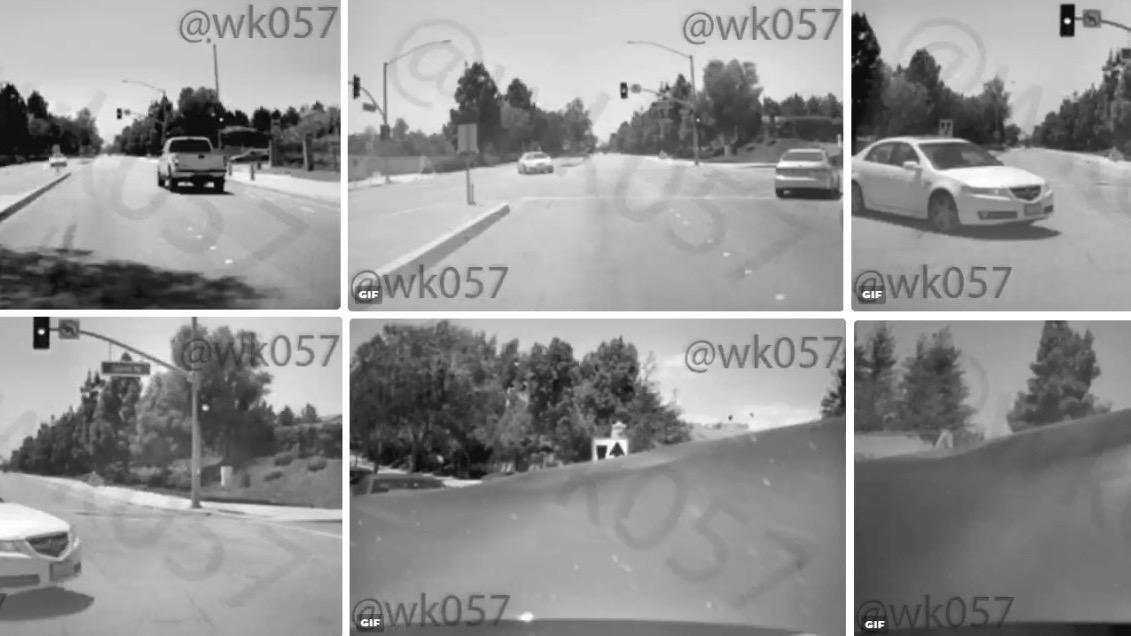

What’s the difference between a dashcam and the Mobileye camera in your semi-autonomous car? Not much.
Infamous Telsa hacker and P85D owner Jason Hughes was able to pull eight frames of video from a salvaged Model S, depicting the final seconds before it collided with an Acura:

Final Second Before Tesla Crash
, What your Mobileye-equipped Tesla sees in the seconds before an accident., Jason Hughes/Electrek.coWhere there’s a camera present, images and video are being recorded. ADAS (Advanced Driver Assistance Systems) require cameras, which means data is being collected, processed and stored somewhere—even if only for milliseconds. It has to be, otherwise features like Lane Keeping and Speed Limit recognition wouldn’t work.
And then you have Tesla’s Autopilot, arguably the most advanced semi-autonomous driving suite currently on the market. Although Tesla’s relationship with camera manufacturer Mobileye is coming to an end, new Model S and Model X’s still use Mobileye’s EyeQ3, the most common camera in luxury cars equipped with ADAS or Autonomous Driving (AD) suites.
I’ve been looking into how video can be pulled off of Mobileye cameras for months, but Jason Hughes’ extraction of these 8 frames is the first I’ve seen taken from a consumer car. Whereas Mobileye’s development cameras possess ethernet ports for easy video capture, the units in consumer cars do not.
According to an interview with Electrek.co, Hughes accessed these frames from an Event Data Record (EDR) found inside a salvaged Tesla’s Media Center Unit (MCU). Hughes was unable to view the full plain text data logs because of Tesla’s proprietary logging format, but according to what he was able to decipher, Autopilot was not engaged in this particular accident.
So what’s the significance of these frames?
In theory, any car with a Mobileye can record video, but the Telsa implementation is unique. The same networking functionality (a.k.a. Fleet Learning) Tesla uses to crowdsource driver behavior and improve Autopilot provides the pipeline through which the low-resolution Mobileye images could be transmitted.
Could be.
If Tesla is viewing the final frames prior to impact and correlating them to the data logs, it would explain how they can assign accident responsibility with such confidence often only days after the event.
Multiple sources in the cybersecurity and hacking communities claim that nothing would prevent a Tesla (or any Mobileye-equipped and networked car, fo that matter) from automatically uploading video in the event of an accident, much like GM’s Onstar’s accident alerts. The only limiting factors would be power, bandwidth, storage—and adherence to the any terms-of-service related to privacy.
Some lingering questions: How much footage is stored? Under what cicumstances is it uploaded? Who owns the footage?
I’ve reached out to Tesla for comment.
Much more to come.
Alex Roy is author of The Driver and LiveDriveRepeat, and Editor-at-Large for The Drive. You may follow him on Facebook, Twitter and Instagram.